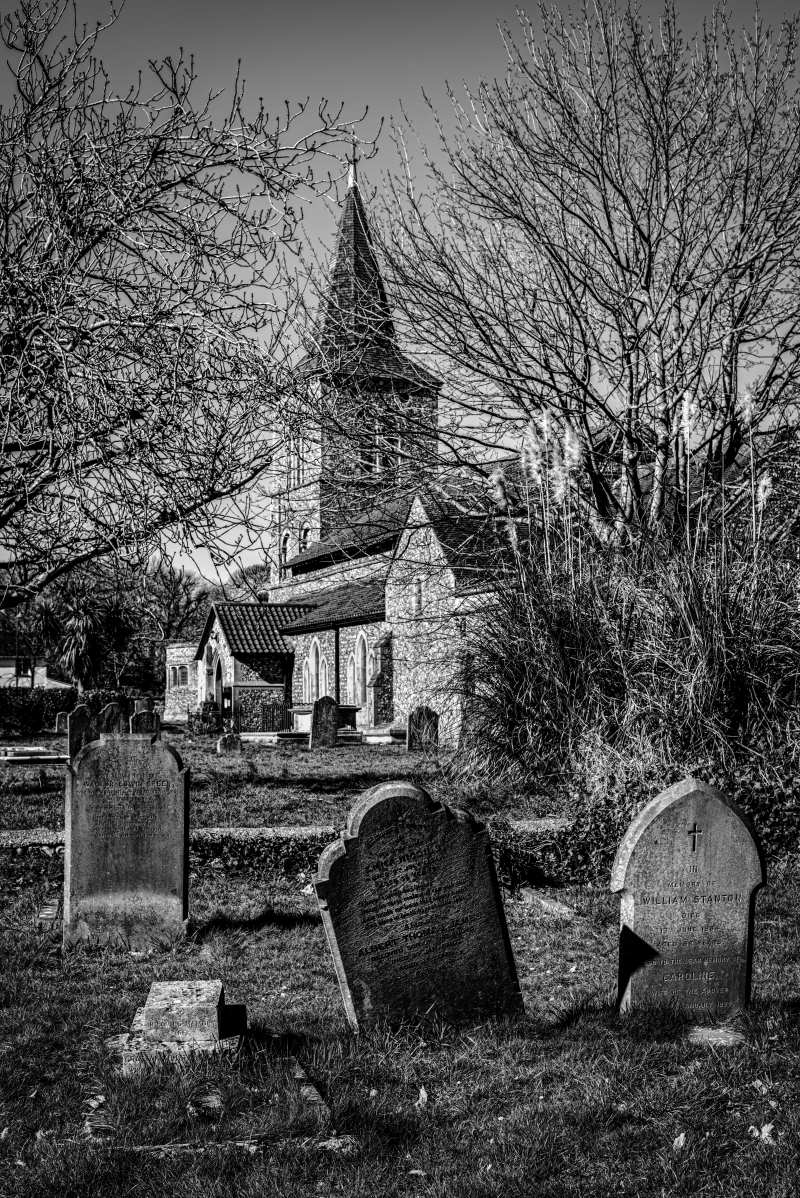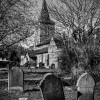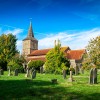Church of St Michael
Uploader's Comments
On February 21st 1941 the tower was badly damaged by an unexploded bomb. The Bomb Disposal Unit dug a deep hole but could not find the bomb. A second hole was dug but still the bomb was not found, although its track was detected. As the tower was now dangerous due to the impact of the bomb and subsequent digging, the Bomb Disposal Unit refused to explore further until the tower had been demolished.
After consultation with the Ancient Monuments Department of The Ministry of Defence as to the best plan of action, it was decided to carefully take the tower down to ground level, mark each stone and timber section, record them on a plan and store them in the churchyard for rebuilding. This done, the Bomb Disposal Unit started a third excavation and found a one-ton bomb near the West end of the North aisle on New Years Day 1943. The bomb had remained embedded in the churchyard for nearly two years. It was defused and was, for some time, exhibited in the church.
The tower was meticulously reconstructed by Frank Duke, builders, of Steyning, the cost being borne by the War Damage Commission. It was decided to build vestries on each side, the tower proper providing an entrance vestibule. The original tower did not have an external door, but this was provided and is an extremely accurate copy of a Norman doorway. The wrought iron on the door incorporates the date, 1950 and was made by George Allen of Hurstpierpoint. There was difficulty in rebuilding, as underground streams had to be pumped out day and night. The tower is now supported on concrete piles driven 40 feet into the chalk.
Uploaded by dave
on 20 March 2021



